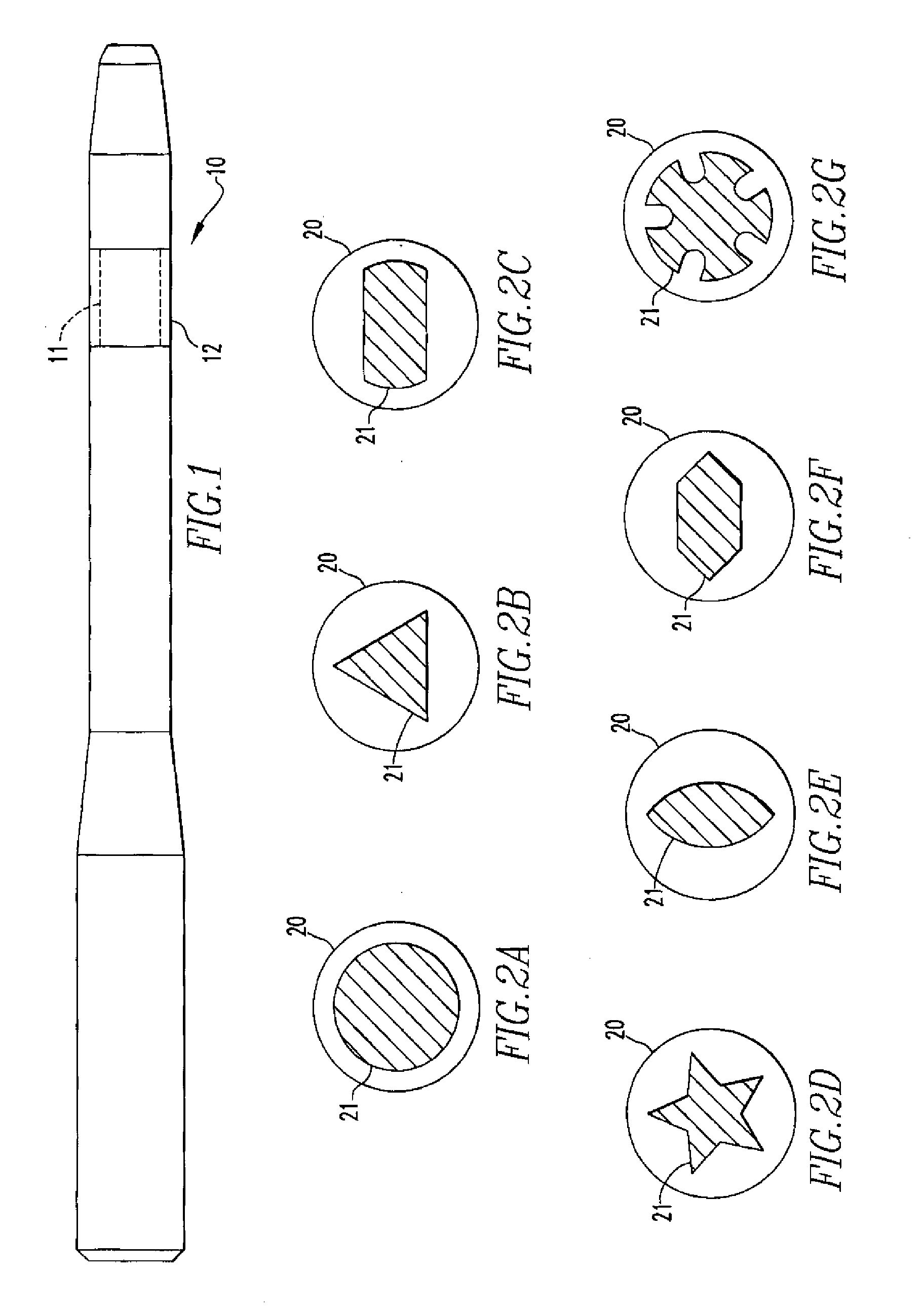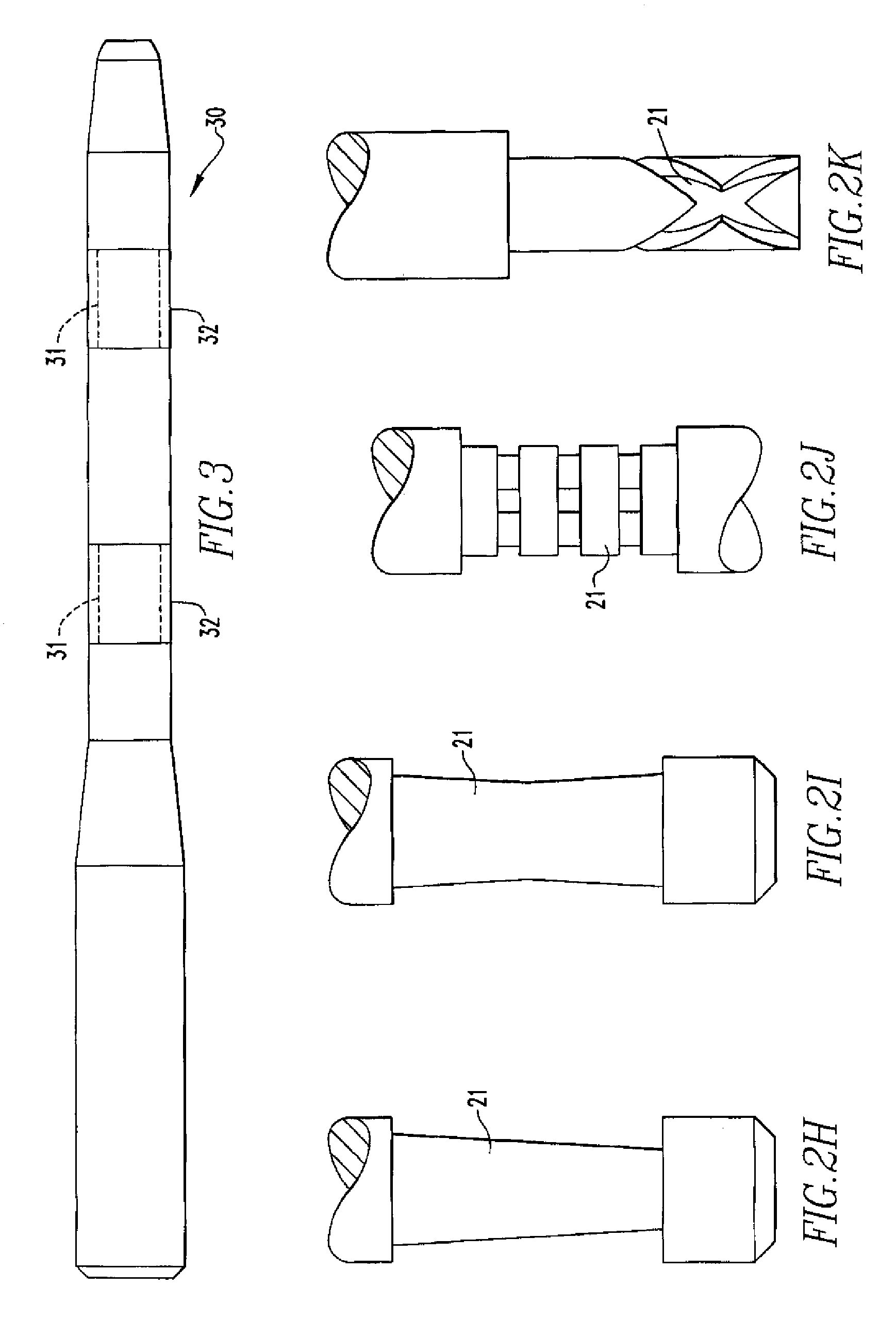Internal fixation devices
a technology of fixation device and inner tube, which is applied in the field of internal fixation device, can solve the problems of unmineralized scar tissue, non-union or pseudo-arthrosis, and non-load-supporting unmineralized scar tissu
- Summary
- Abstract
- Description
- Claims
- Application Information
AI Technical Summary
Benefits of technology
Problems solved by technology
Method used
Image
Examples
example one
[0218]The present example provides a fabrication process for the internal fixation device of the present disclosure, a method of fixating the device to bone, and test results on the fixation strength of the device.
[0219]Sleeves of a polymer composite were manufactured using a copolymer and a filler material. Specifically, 600 g of a copolymer of poly L-lactic acid (PLLA) and poly D-lactic acid (PDLA) having a glycolide component was vacuum dried at a temperature of about 50° C. and a pressure of about 10 millibars for 48 hours. The ratio between the lactide unit and the glycolide unit was 85:15. 300 g of a filler material, namely calcium carbonate, were placed in a 1000 ml glass jar and vacuum dried at about 150° C. and a pressure of about 10 millibars for 48 hours. A dry blend was then produced by mixing the copolymer and calcium carbonate. This blend was then compounded in a prism twin screw extruder to form pellets of a copolymer / calcium carbonate composite. These pellets were pl...
example two
[0222]Two Delrin rods were used to simulate a fractured bone. Ends of the rods were placed adjacent to each other with the point at which the ends of the two rods met being defined as the simulated fracture point. Each rod had a diameter of about 0.75 inches, a length of about 4.3 inches, and a 7 mm diameter through hole that extended the entire length of each rod.
[0223]Fiber reinforced composite rods were then manufactured. PLLA fiber was first made by taking PLLA granules with a nominal intrinsic viscosity of 3.8 and extruding the granules into a fiber. A single screw extruder fitted with a gear pump and a 2 mm spinneret die was used. The extruder also had a provision for air cooling. The extruded fiber was batched on spools for the next processing step. Subsequently, the fiber was progressively stretched at elevated temperatures to produce a final diameter of ca. 100 microns and a draw ratio between about 8 and about 15. The final molecular weight of the drawn fiber was between a...
example three
[0228]A die-drawn PLDLA(70 / 30) rod containing 35% wt / wt of calcium carbonate was machined into a plug having a diameter of 13 mm and a length of 25 mm. The plug included a stem having a length of 20 mm and a diameter of 8 mm. The plug was similar in construction to the polymer material shown in FIGS. 53A-53B. A hole of 3 / 16 inch diameter was drilled through the centre the plug. Once machined into these dimensions, a 40 mm length of steel tubing, referred to as a metal sleeve, was inserted into the hole.
[0229]A stainless steel tubing (8 mm ID / 12 mm OD) was generated such that one end of the tubing was profiled to have slots, 3 (6 mm semicircle slots) and 3 (4×8 mm elliptical slots), and the other end was machined to have 3 flat surfaces suitable for an instron to grip. The stem of the plug with metal sleeve was inserted into the end (containing the slots) of the stainless steel tubing, to form a construct, and this construct was placed into the canal of a section of femur, approximat...
PUM
 Login to View More
Login to View More Abstract
Description
Claims
Application Information
 Login to View More
Login to View More - R&D
- Intellectual Property
- Life Sciences
- Materials
- Tech Scout
- Unparalleled Data Quality
- Higher Quality Content
- 60% Fewer Hallucinations
Browse by: Latest US Patents, China's latest patents, Technical Efficacy Thesaurus, Application Domain, Technology Topic, Popular Technical Reports.
© 2025 PatSnap. All rights reserved.Legal|Privacy policy|Modern Slavery Act Transparency Statement|Sitemap|About US| Contact US: help@patsnap.com



